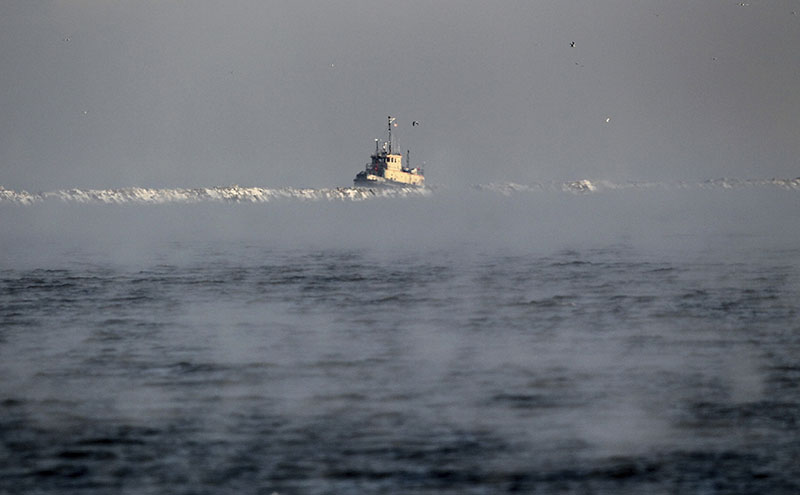Lake Erie's icy waters, wicked winds hamper plane's recovery
When crews started searching for a plane that was carrying six people when it disappeared over Lake Erie, they began with an expanse about half the sise of New York City's five boroughs.
Within a few days, they narrowed it to half the area of Manhattan.
Now two weeks after the crash, crews are concentrating on four spots within a football field sised-section near Cleveland's lakefront where divers already have found the business jet's cockpit voice recorder, seats, part of the fuselage and the remains of one passenger. Officials said several significant pieces of debris were brought up Wednesday.
The slow-going search — hampered by ice, high winds and murky waters that limit visibility along the lake bottom — shows just how difficult it is to find the wreckage of a plane in water or a remote area despite the use of emergency beacons and high-tech equipment.
Weather Impact
The weather on the shallowest of the Great Lakes has been a hindrance for searchers since the night of December 29 when the plane vanished from radar.
High waves and blustery conditions stopped some US Coast Guard boats from going out in the early hours. Snow squalls and darkness caused more problems.
All that was known was that the plane took off from a small airfield in downtown Cleveland and turned north across the lake before suddenly losing altitude about 2 miles out.
With no exact location to guide them, search planes and boats covered 128 square miles before the Coast Guard determined the next day that it was a recovery mission.
Water Searches
It's not unheard of for searches to stretch for a week or more but most of those have been in larger bodies of water.
Several weeks passed before crews found most of the wreckage of a plane that crashed off the Mississippi coast in 2015. And the hunt is still on for Malaysia Airlines Flight 370 that vanished over the Indian Ocean in March 2014.
The initial search in Lake Erie included boats equipped with sonar that track underwater images, and signals thought to be from the plane's emergency beacon helped narrow the area to 12 square miles.
But it wasn't until an underwater locator beacon that searchers found what is believed to be the crash site. The cockpit voice recorder and a seat with human remains were pulled from the water the next day — eight days after the plane disappeared.
Recovery Efforts
Despite being close, finding the rest of the plane has been difficult. Investigators believe it broke apart on impact, scattering the debris. All six people aboard are presumed dead.
Recovery crews have been contending with an ice-covered surface and freezing conditions that limit divers to two hours in the water at a time. Along the bottom, they can see only a few inches. They're feeling their way through the water, guided by crew members at the surface using sonar.
"When you're down there you don't know which way is north, south, east or west," said Tom Gouin, who works with Great Lakes Diving & Salvage in Gaylord, Michigan, but is not part of the recovery effort in Lake Erie.
"All you can do is look for the bubbles because they always go up," he said. "It's all a guessing game pretty much."






